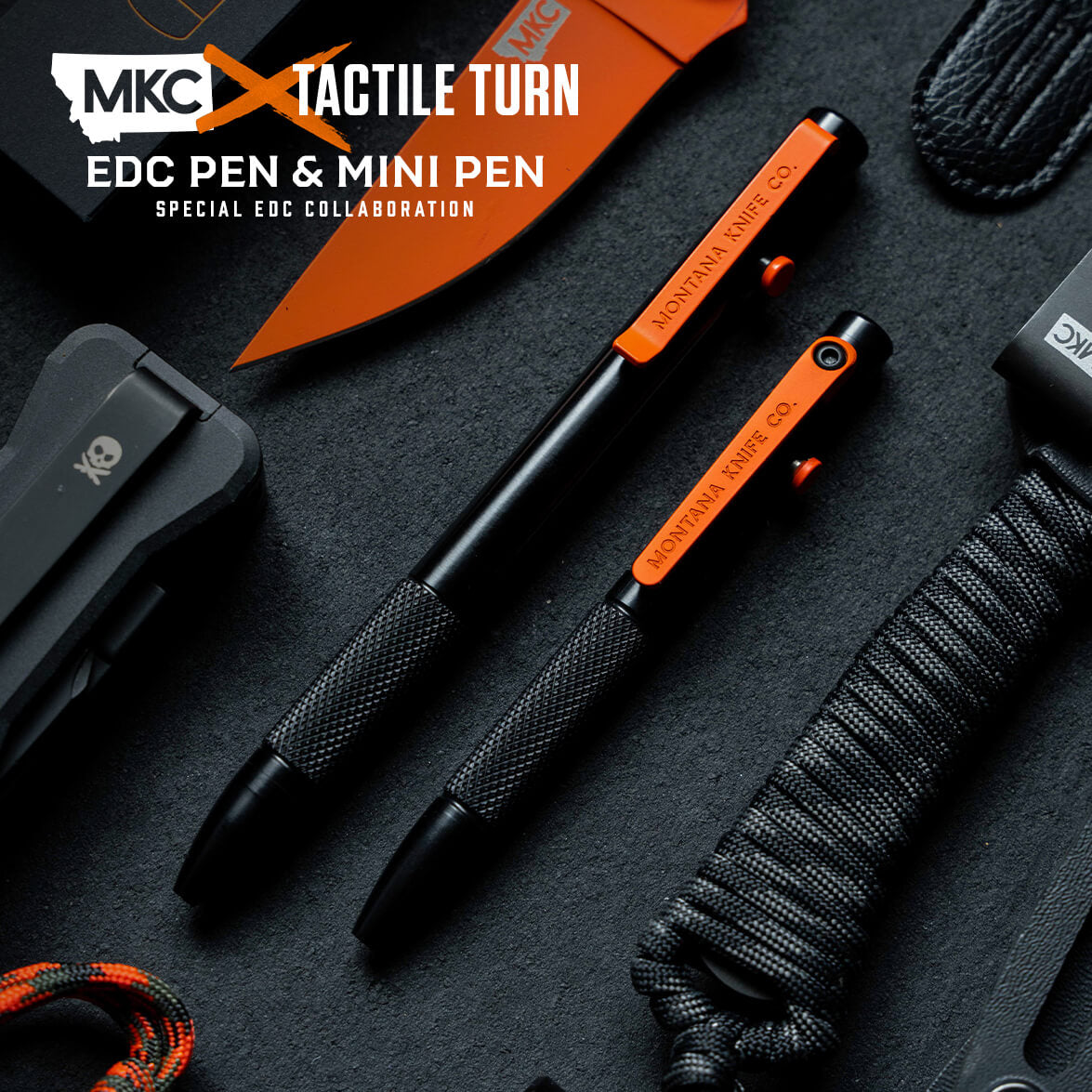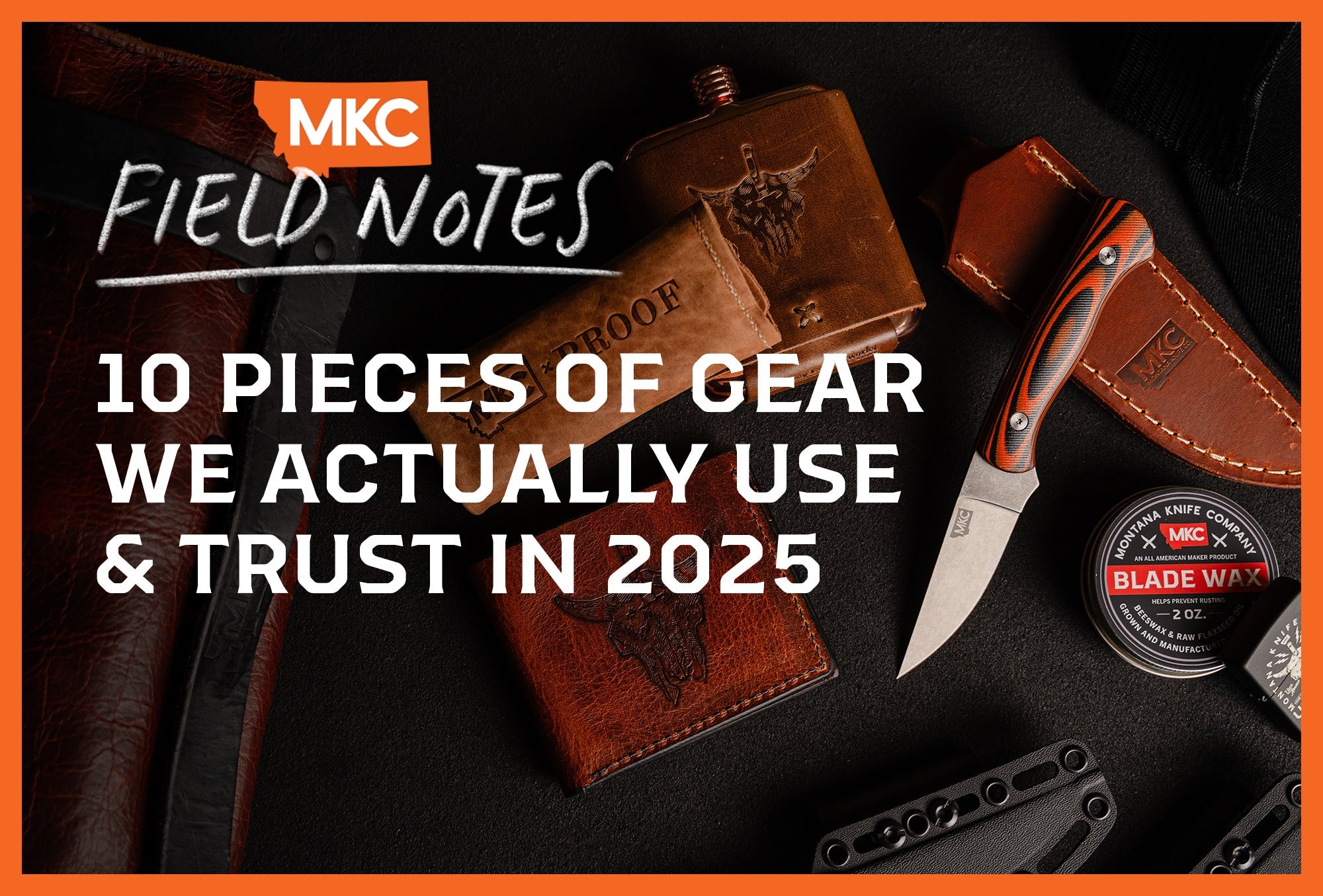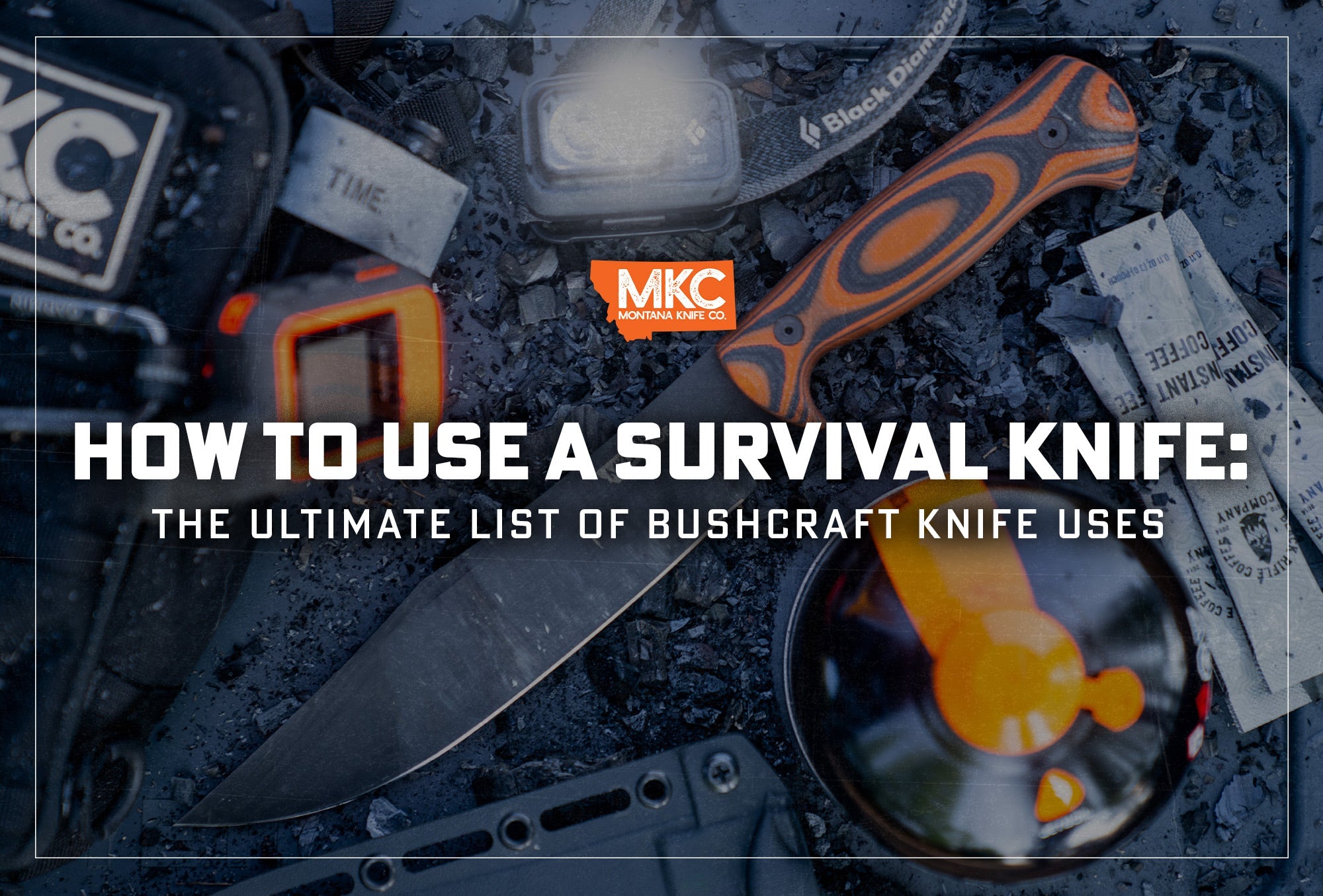Whether you skin animals for meat alone or to take home a trophy, the best skinning knives will make the process faster, safer, and neater than a standard hunting blade.
Despite the name, though, the best skinning knives do more than just skin. Like any knife, your skinning knife backs you up in an emergency, executes everyday tasks, and even processes meat.
Not all skinning knives are equal. The best skinning knives are sturdy, sharp, and designed to keep hides (and meat) intact. Below, you’ll learn how to choose the best skinning knife for you, plus how to keep it in good shape for years to come.
The Anatomy of the Best Skinning Knives
The best skinning knives are thin, light, sharp, and fixed to a strong handle. They must be sleek, with a deep belly and an upswept tip that glides between skin and meat.
Good knives also have grippy, ergonomic handles. Your skinning experience may be bloody, messy, cold, wet, or all of the above. A slippery handle isn’t just inconvenient. It’s downright dangerous.
We prefer G10 handles for their washability, water resistance, and grip. Plus, G10 lets us create a wide range of handle colors and patterns.
The materials that make up your blade are important to consider, too. The best skinning knives are sharp, easy to maneuver, and corrosion-resistant. Different steel formulas have different characteristics.
Skinning knives come in all shapes and sizes. Short skinners, like our Packout Skinner, are excellent for those who prioritize control. A shorter blade is easier to aim and maneuver, but it may take longer to process a large carcass. Conversely, longer skinning knives are great for experienced skinners who can use that extra length to their advantage.
Some hunters choose to pack multiple skinning knives of different sizes. This variety can be especially useful if you regularly harvest different game types.
Pro tip: The best skinning knives are not folding knives. The moving parts in a folding knife mean more parts to worry about maintaining, cleaning, and lubricating. Plus, folding knives are less safe than fixed blades. Elbow-deep in a hide is the last place you want your knife to snap closed or break a hinge.

The Best Skinning Knife Steel
The best skinning knives come in one of two types of steel: carbon or stainless.
Each material has pros and cons that may lead you to favor one over the other. We’ll explore these benefits and drawbacks and share our recommendations below.
Carbon Steel
Carbon steel is tough, shock-resistant, wear-resistant, and durable. It stands up to the wilderness’s demands extremely well. It’s also affordable, so hunters on a budget may have more selection among carbon steel knives.
Carbon steel is also easy to sharpen. It holds its edge longer than stainless steel, and it’s easier to resharpen when it dulls.
Unfortunately, carbon steel corrodes more easily than stainless. A good knife coating can keep corrosion at bay, but the best way to keep a carbon steel knife in good condition is to care for it properly. Clean your carbon steel blade regularly and keep it dry.
A drawback of carbon steel is its appearance. Stainless steel has a shiny, mirror-like finish, but carbon steel does not. While a well-cared-for carbon steel knife can still be metallic and attractive, it’ll never have stainless’s reflective finish.
Finally, carbon steel requires careful heat treatment. When forged improperly, it can be brittle and prone to shattering, so invest in a high-quality carbon steel knife to get the best return on your investment.
Stainless Steel
Stainless steel is attractive, corrosion-resistant, and sturdy. Stainless steel also resists heat well, which is why we use it in cookware. While we don’t recommend exposing any of your skinning knives to high heat, a stainless steel knife will withstand such treatment better.
Stainless steel is much more expensive than carbon steel. It’s also more difficult to sharpen. A stainless steel blade requires more frequent sharpening than carbon steel, and the increased sharpening difficulty makes good knife maintenance a chore.
Stainless steel blades resist corrosion better than carbon steel. However, opting for stainless steel won’t replace proper knife care, as even a stainless blade can corrode under the correct conditions. Because of their natural corrosion resistance, they’re smart choices for anglers and hunters who frequent wet areas.
Finally, stainless steel knives tend to harden over time. While this can make them sturdier, it can also make them brittle. All knives deserve careful treatment, but keep in mind their potential brittleness when handling old stainless steel knives.
Carbon Steel vs. Stainless Steel: Which Makes the Best Skinning Knives?
While stainless steel has its upsides, we think the best skinning knives are made of carbon steel. As long as you care for your carbon steel knife and keep it clean and dry, it’ll reward you in spades.
Carbon steel knives are tougher, sharper, sturdier, and more affordable than stainless steel knives. These traits make for ideal skinning knives, regardless of your quarry’s size. We craft our Stonewall Skinner with 52100 high-carbon ball-bearing steel.
While carbon steel makes the best skinning knives in most situations, wet and salty environments are the exception. Stainless steel resists corrosion better than carbon steel, so if you plan to carry your skinner out on the water, you may want to consider stainless.
Handle Materials and Ergonomics
Skinning a large animal isn’t easy. This is where ergonomics comes into play. Whether you’ll be skinning for minutes or hours, you’ll appreciate a blade with a strong grip, a comfortable shape, and easy cleaning.
We use G10 to craft most of our knife handles. G10 is a composite material that can last a lifetime. It’s nonporous, grippy, easy to clean, and more durable than wood.
While wood makes beautiful knife handles, it’s prone to splintering, warping, and cracking, especially when exposed to moisture. Antler can fall prey to similar moisture complications. It’s challenging to disinfect cracks and crevices, which is why we don’t recommend these materials for skinning knives.
Maintaining and Caring for the Best Skinning Knives
The best skinning knives last a lifetime when properly cared for. Regardless of whether you choose carbon steel or stainless steel, consider these commonsense knife care guidelines:
- Clean and dry your blade immediately after using it. Hand-wash with warm, soapy water whenever possible instead of using the dishwasher. Rust forms quickly on moist blades.
- Apply wax after cleaning. Our Blade Wax contains natural materials that hydrate, lubricate, and protect your blade. A good blade wax also repels water, which keeps corrosion at bay.
- Clean your holster or sheath regularly. Moisture, grit, blood, and other contaminants can find their way inside, and these can damage your blade when you holster it. Make sure it’s completely dry before stowing your knife inside.
- Opt for stainless steel if you work near the ocean. Salt and water corrode carbon steel.
Skinning Knife Safety Tips
Keep knife safety top of mind when you’re carrying a blade. Whether you’re a seasoned veteran who’s skinned hundreds of animals or a novice skinning their first, remember the following tips:
- Always assume a knife is sharp and capable of causing lethal damage.
- Never point a blade at an object you’re not willing to puncture. Never pass the edge of a knife over a material you’re not willing to cut.
- Only hold your knife when you need to use it. Knives are not toys.
- Keep your surroundings in mind when cutting (especially body parts and their proximity to your blade).
The best skinning knives cut skin from meat, and you don’t want to turn that cutting ability on yourself or a friend. Always show proper respect to your blades.
Final Thoughts on the Best Skinning Knives
The best skinning knives are durable, sharp, ergonomic, easy to clean, and easy to use. While there are plenty of knives on the market that fit that description, we can’t help but be partial to our own.
Once you’ve experienced the best skinning knives we have to offer, you’ll find that mediocre doesn’t cut it anymore. Whether you need a compact skinner that fits in any bag or a full-size blade that pulls double duty, you’ll find what you need when you shop Montana Knife Company.

by Josh Smith, Master Bladesmith and Founder of Montana Knife Company






































